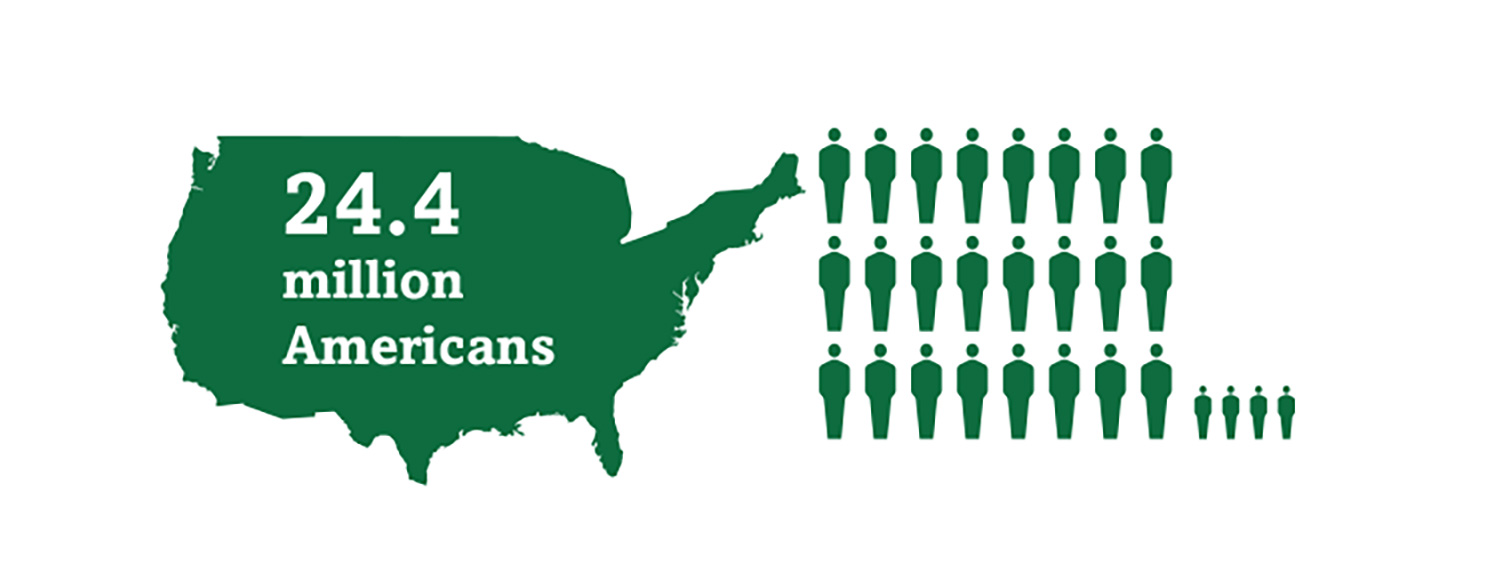You use the lens of your eye from the time you wake up to the time you go to sleep – and across multiple distances – for activities such as driving, reading, golfing, gardening, and watching your grandchildren play.
Since cataracts start small and form slowly, you may not notice any impact on your vision at first. Then, as the cataract grows larger and it clouds more of your lens, it will distort the light passing through the lens, which will lead to more noticeable symptoms.

Without cataracts

With cataracts
Images for illustrative purposes only. Actual results may vary.
Cataract symptoms to look out for:
- Blurred, dim, hazy, or cloudy vision, like you’re looking through a dirty or smudged window, and you find yourself squinting or blinking more often to get better focus
- Increased sensitivity to light and glare, like from oncoming cars’ headlights when driving at night
- Seeing “halos” around lights, such as lamps, headlights, and glare from the sun
- Needing brighter light for indoor activities, like reading
- Fading or yellowing of colors, so you may have trouble differentiating between colors in the same family, such as blue and purple
- Colors don’t look as bright as before or are becoming yellowish
- Double vision in a single eye
- Whitish or gray film over your eye when you look in the mirror
- Frequent changes in your eyeglass or contact lens prescription
What if I have cataracts?
section01_03-3.jpg

Around 24.4 million Americans currently have cataracts, so you aren’t alone.1 If your cataract is in the earlier stages, it may not need to be corrected immediately, and a prescription for new eyewear can help. However, all cataracts will eventually need to be gently removed through surgery and replaced with a small, soft, and clear artificial lens, called an IOL (intraocular lens). Rest assured, this is one of the most common outpatient procedures performed.
When should I contact my doctor?
If you’re over the age of 40 and are experiencing any of these cataract symptoms, you should make an appointment with your ophthalmologist to have your eyes checked.
1 American Academy of Ophthalmology. Eye health statistics at a glance. Updated April 2011.
http://www.aao.org/newsroom/upload/Eye-Health-Statistics-April-2011.pdf. Accessed June 13, 2013. REF2014MLT0033.


